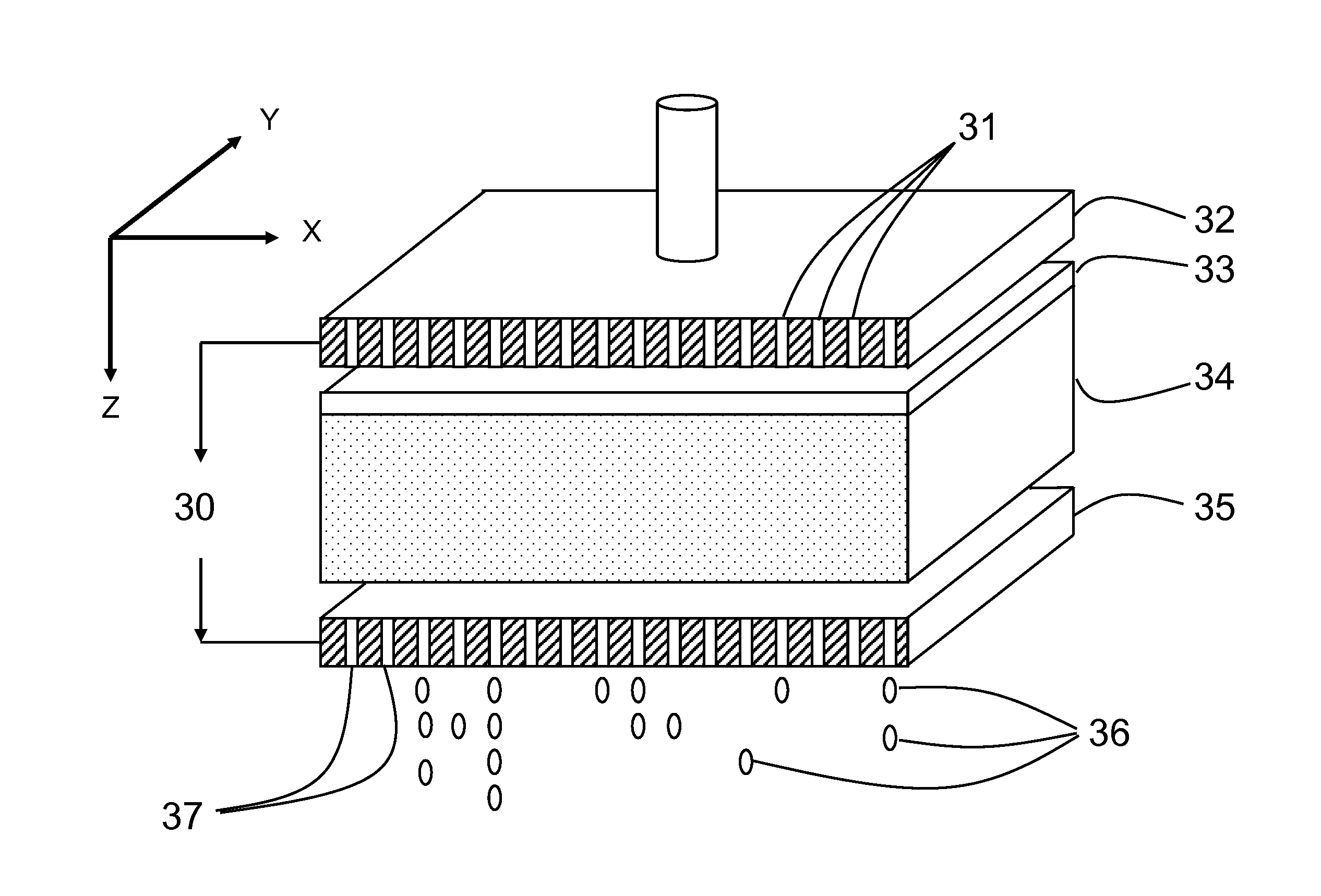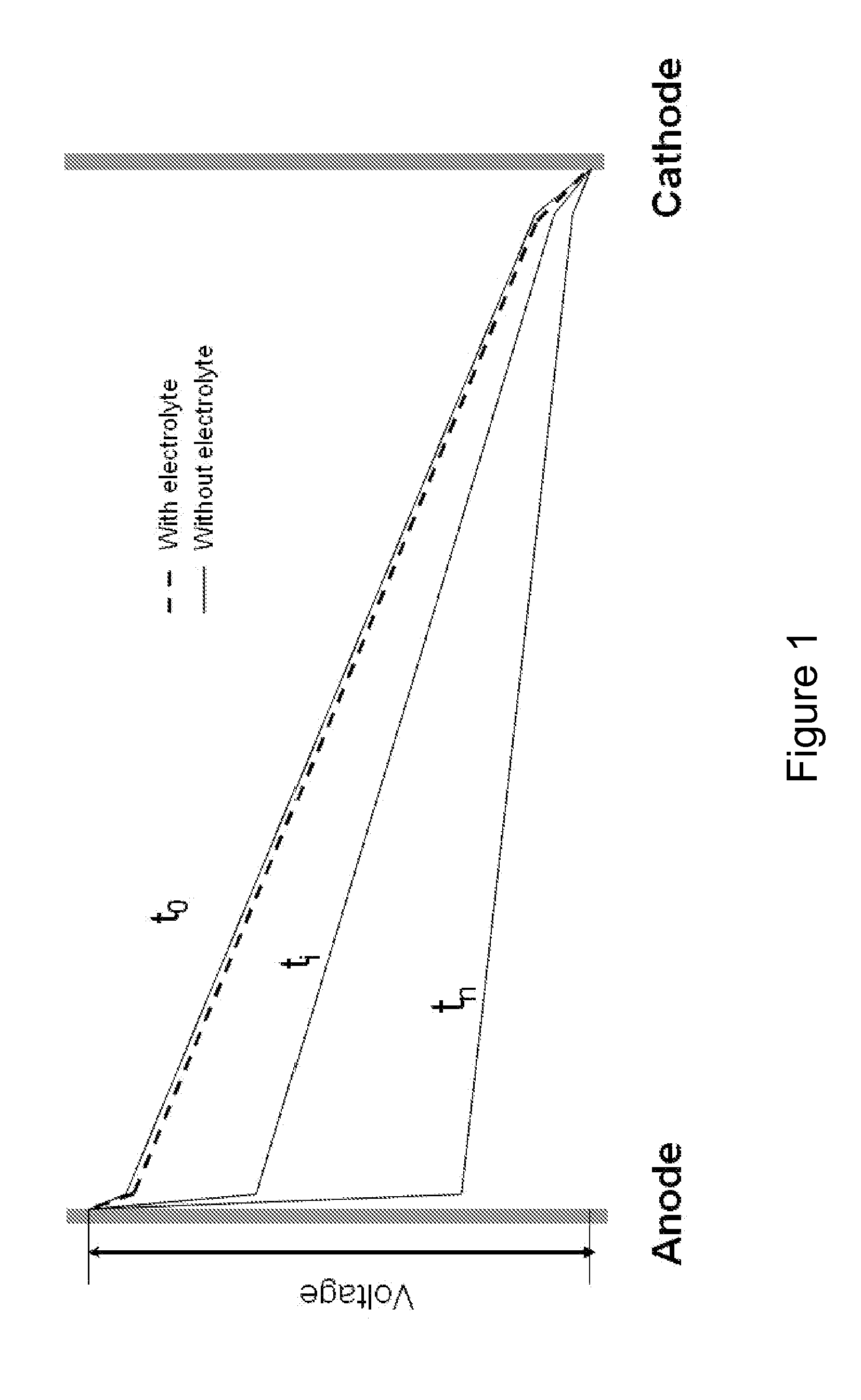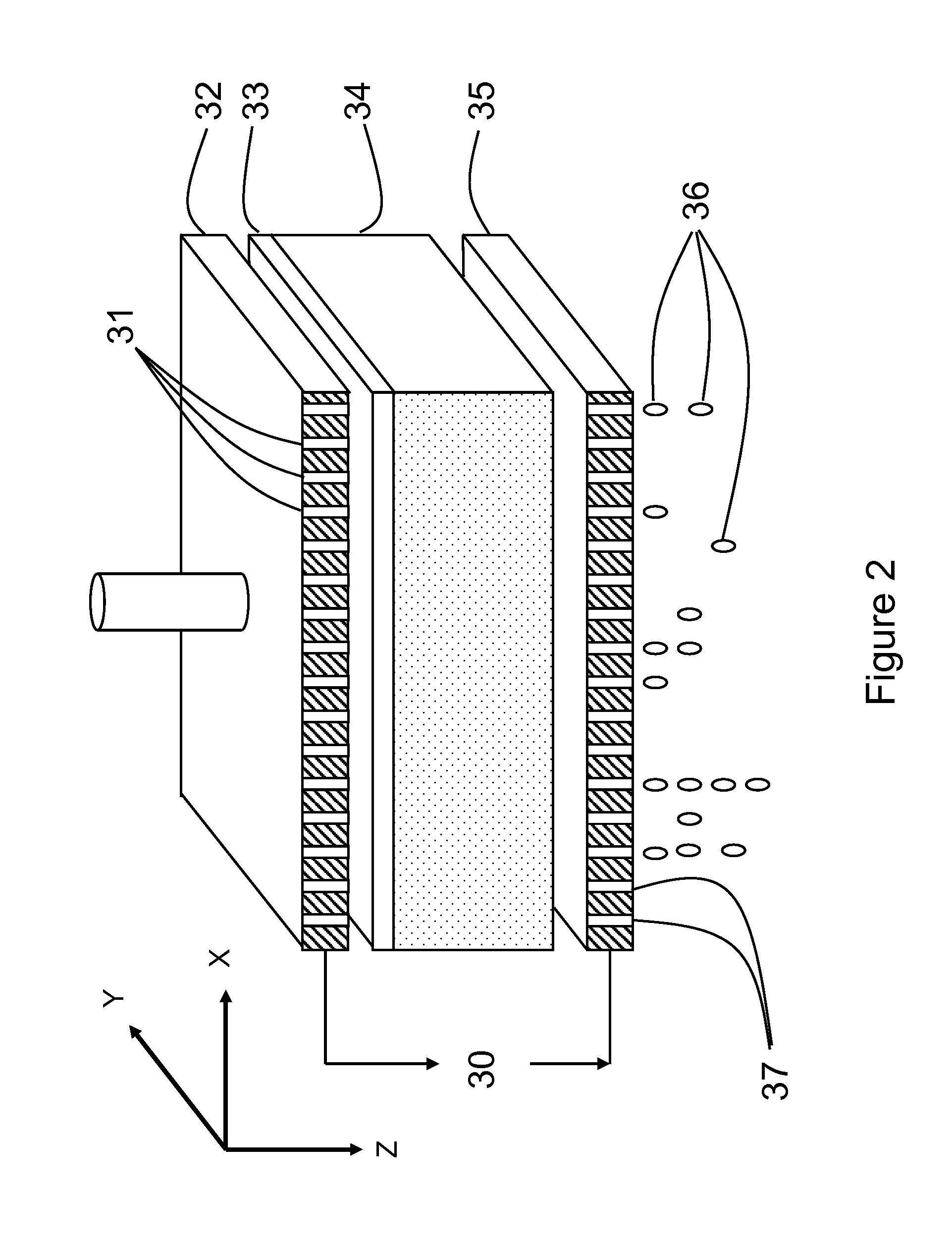Method and apparatus for increasing the efficiency of electro-dewatering
a technology of electro-dewatering and efficiency, applied in the field of electro-dewatering, can solve the problems of more water, and achieve the effects of reducing ph, preventing water from being evacuated, and reducing the ph
- Summary
- Abstract
- Description
- Claims
- Application Information
AI Technical Summary
Benefits of technology
Problems solved by technology
Method used
Image
Examples
Embodiment Construction
[0045]An electro-dewatering apparatus is known in the art and is more fully described in publication WO2007 / 143840. Referring now to the present application, FIG. 1 is a schematic representation of voltage as a function of distance between two electrodes for three time points without electrolyte (solid line) and with electrolyte (dashed line), highlighting the consequence of subjecting an electrolyte-poor substance to electro-dewatering. This image shows the drawbacks of the prior art whereby generating a current through a porous liquid-bearing substance rapidly leads to a decrease in voltage as a function of time and as a function of distance from the anode. The main reason that a zone of increased resistance appears near the anode is the outflow of cations away from the anode toward the cathode, thereby drawing water to the cathode and generating a crusty substance near the anode. This crusty substance has the property of severely limiting the amount of current that can flow throu...
PUM
| Property | Measurement | Unit |
|---|---|---|
| Fraction | aaaaa | aaaaa |
| Fraction | aaaaa | aaaaa |
| Fraction | aaaaa | aaaaa |
Abstract
Description
Claims
Application Information
 Login to View More
Login to View More - R&D
- Intellectual Property
- Life Sciences
- Materials
- Tech Scout
- Unparalleled Data Quality
- Higher Quality Content
- 60% Fewer Hallucinations
Browse by: Latest US Patents, China's latest patents, Technical Efficacy Thesaurus, Application Domain, Technology Topic, Popular Technical Reports.
© 2025 PatSnap. All rights reserved.Legal|Privacy policy|Modern Slavery Act Transparency Statement|Sitemap|About US| Contact US: help@patsnap.com



